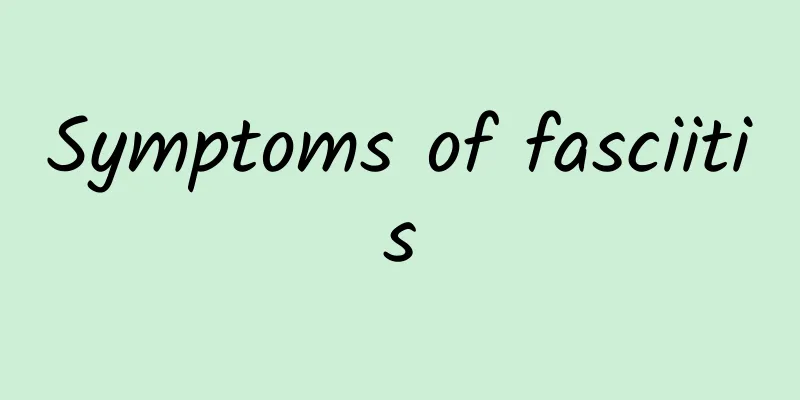Symptoms of fasciitis

|
We also call fasciitis fibrositis. The occurrence of fasciitis brings great pain to the patient's body, so we need to understand some knowledge about fasciitis. This will not only help us prevent fasciitis, but also help us treat fasciitis. As long as we recognize the symptoms of fasciitis, once the symptoms of fasciitis appear, we can treat it as soon as possible. Fasciitis can occur in many parts of our body. If we do not understand the symptoms of fasciitis, it is easy to misdiagnose fasciitis. We can use a variety of methods to treat fasciitis, so there is no need to worry. Fasciitis, also known as fibrositis, is a comprehensive concept. It means that some patients with low back pain have small nodules on the surface of the sacrospinal muscle or at the attachment of the iliac crest muscle, accompanied by pain and tenderness, which can sometimes also be found in the buttocks. The nodule palpable clinically is actually a localized fat nodule, so it is also called fat hernia. Such nodules may stimulate peripheral nerve endings and produce local muscle spasms and pain. Because the disease is not treated thoroughly in the acute stage, it turns into a chronic disease; or because the patient is repeatedly exposed to adverse stimuli such as strain, cold, etc., symptoms such as continuous or intermittent chronic muscle pain, soreness, and weakness may recur. It is often manifested as pain in the affected area, mostly soreness and discomfort, muscle stiffness and rigidity, or a feeling of heavy pressure. Sometimes degenerated myofascia and fibrous nodules can be felt under the skin. Symptoms worsen in the morning, when the weather changes, or when exposed to cold. The pain is relieved after activity and often recurs. During an acute attack, local muscles become tense and spasmodic, and movement is limited. Myofasciitis can be divided into: cervical and shoulder myofasciitis, eosinophilic fasciitis, nodular fasciitis, lumbar and back myofasciitis, etc. 1. Surgery For some patients, symptoms can be relieved by resting. Hot compresses and massage can dissipate nodules and are also effective in blocking painful nodules, but exercising the lumbar muscles may still be the most important. A small number of patients with stubborn symptoms that cannot be cured for a long time require surgical treatment. During surgery, cracks were found in the local fascia, with fat herniating from the cracks. These are the nodules palpable clinically. Adhesions of fat to surrounding tissues, including fascia and adjacent cutaneous nerve branches, may be the cause of pain. Surgery should include excision of the nodule, repair of the fascia, separation of adhesions, and excision of the cutaneous nerve. The effect is often good, but because the lesions are often multiple, surgery can only solve the symptoms of one place, so the surgical indications should still be strictly controlled. 2. Treatment of chronic phase The treatment for patients in the chronic stage is mainly based on proper rest, oral and topical anti-inflammatory and analgesic drugs, muscle relaxants and sedatives, and proper muscle relaxation massage. After the symptoms of back pain caused by lumbar muscle strain are relieved, you should actively strengthen the training of your back muscles, adjust your work and life rhythm, strengthen the health of your waist, prevent your waist from being stimulated by adverse factors such as cold, trauma, strain, etc. You should sleep on a hard bed or a relatively hard Simmons mattress, avoid sleeping on a camp bed or a soft sofa, and do some appropriate waist exercises after getting up. Otherwise, the symptoms of chronic lumbar muscle strain may recur very easily. If lumbar muscle strain or lumbar myofasciitis occurs repeatedly, it will easily accelerate the degeneration of the lumbar spine and may easily cause more serious lumbar disc herniation or lumbar spinal stenosis. Above we introduced what fasciitis is. We know that fasciitis is also called fibrositis. Fasciitis can occur in many parts of our body, so we must do a good job of preventing fasciitis. The above article introduces the symptoms of fasciitis in detail. I believe the above introduction is helpful to everyone. |
>>: What to do about tension headaches?
Recommend
How to care for patients with adrenal tumors?
Adrenal tumors are a type of tumor that can gener...
What to do if the arm is scratched
In daily life, we often get some abrasions acciden...
Women should not do this after urinating, it may cause diseases
Many people also carry some toilet paper in their...
Dangers of eye liposuction
Too much fat around the eyes often makes people f...
Acupuncture points to prolong ejaculation
For male friends, you all want to prolong the tim...
What happens when you have sex during your period?
It is common sense that you cannot have sex durin...
What to do with pelvic fluid accumulation after abortion? Comprehensive treatment methods
The pelvis is one of the important organs of wome...
What is the cause of intracranial ischemia?
There are many causes of intracranial ischemia, t...
Polycystic liver and polycystic kidney
Do you know what polycystic liver disease and pol...
How to recover from a knee injury
If the knee tissue is damaged, it is quite seriou...
Maximum dosage of Curculigo
The dosage of the medicinal material Curculigo is...
30-year-old lumbar bone hyperplasia
At the age of 30, people have reached the age of ...
The efficacy of whole insects
The whole scorpion, also known as the whole insec...
What is the best medicine for treating athlete's foot?
Because our feet are wrapped in socks and shoes f...
What to do if the vagina is inflamed
It is common for men to have inflammation of the ...









